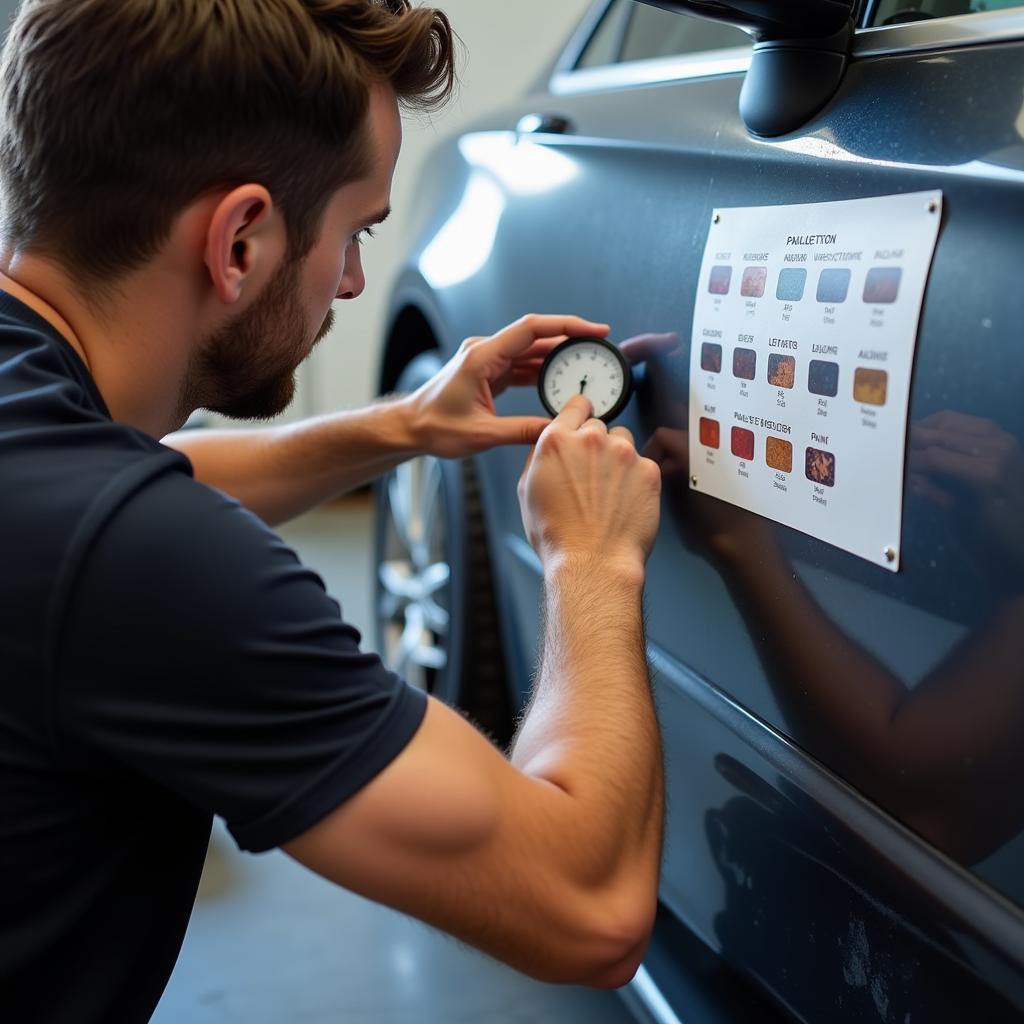For car enthusiasts and detailers alike, achieving a flawless paint finish is the ultimate goal. Whether you’re dealing with swirl marks, light scratches, or oxidation, using the best compound for car detailing is crucial. This comprehensive guide delves into the world of car detailing compounds, helping you understand how to choose the right product and achieve professional results.
Understanding Car Detailing Compounds: What are they?
Car detailing compounds are abrasive substances designed to remove imperfections from your car’s paintwork. They contain tiny particles that work like fine sandpaper, leveling out imperfections and leaving a smooth surface. Different compounds offer varying levels of aggressiveness, making it essential to choose the right one based on the severity of your paint’s condition.
Choosing the Right Compound for Your Needs
Selecting the best compound for car detailing depends on your car’s paint condition and your desired outcome. Here’s a breakdown:
1. Heavy Cutting Compounds:
- Purpose: Removing deep scratches, severe swirl marks, and significant oxidation.
- Abrasiveness: Most aggressive type.
- Caution: Can remove a significant layer of clear coat, so use with caution and experience.
2. Medium Cutting Compounds:
- Purpose: Addressing moderate scratches, swirl marks, and oxidation.
- Abrasiveness: Less aggressive than heavy cutting compounds, offering a balance between imperfection removal and clear coat preservation.
3. Finishing Polishes:
- Purpose: Removing light imperfections, enhancing gloss, and preparing the paint for waxing or sealing.
- Abrasiveness: Least aggressive type, designed to refine the paint and enhance its shine.
 Factors to Consider When Choosing a Car Detailing Compound
Factors to Consider When Choosing a Car Detailing Compound
How to Compound Your Car Like a Pro
Achieving professional results with car detailing compounds requires the right technique and tools. Here’s a step-by-step guide:
-
Wash and Dry Your Car: Ensure your car’s surface is clean and free from dirt or debris before starting.
-
Choose the Right Pad: Different compounding and polishing pads are available, each with varying levels of aggressiveness. Selecting the appropriate pad for your chosen compound and desired level of correction is crucial.
-
Apply the Compound: Apply a small amount of compound directly onto the pad.
-
Work in Sections: Divide your car’s surface into smaller sections for manageable working.
-
Use a Dual-Action Polisher (Recommended): A dual-action polisher oscillates and rotates, reducing the risk of damaging your paint compared to a rotary polisher. Work the polisher slowly and evenly across the section, applying light pressure.
-
Wipe Off Residue: Once the compound has dried to a haze, use a clean microfiber cloth to wipe off the residue.
-
Inspect and Repeat: Inspect the section under good lighting. If necessary, repeat the process for optimal results.
Top Tips for Best Results
- Always work in a well-ventilated area and wear appropriate safety gear, including gloves and eye protection.
- Avoid compounding in direct sunlight, as it can cause the compound to dry too quickly.
- Less is more when it comes to compound application. Start with a small amount and gradually add more if needed.
- Maintain even pressure throughout the process to avoid uneven results.
- Regularly inspect your work under good lighting to ensure you’re achieving the desired level of correction.
- After compounding, it’s essential to protect your car’s paint with a high-quality wax or sealant.
Expert Insight
“Using the right compound and technique can significantly enhance your car’s appearance,” says Mark Johnson, a seasoned car detailer with over 15 years of experience. “Remember to start with the least aggressive approach and gradually increase the intensity if needed. Patience and attention to detail are key to achieving a showroom-worthy finish.”
Conclusion
Achieving a flawless finish through compound car detailing might seem daunting, but with the right knowledge and tools, it’s an achievable goal. Understanding the different types of compounds, choosing the right one for your needs, and mastering the application technique are crucial steps towards achieving professional-grade results. Remember to always prioritize the health of your car’s paint by using the least aggressive approach and following expert-recommended techniques.

Leave a Reply